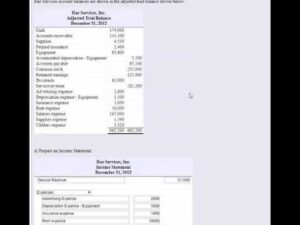Content

According to the IRS, self-employed taxpayers who expect to owe more than $1,000 in self-employment tax must make estimated tax payments four times during the year. You will need to use IRS Form 1040 to file these quarterly taxes. Workers who are self-employed aren’t subject to the withholding tax. When beginning a business, you must decide what form of business entity to establish. Your form of business determines which income tax return form you have to file. The most common forms of business are the sole proprietorship, partnership, corporation, and S corporation.

For taxation, self-employed people are deemed to be independent contractors, since they’re not employed by the client. Thus the California independent contractor tax rate applies to all earnings from the business. The collections are performed by the Franchise Tax Board. They’re responsible for collecting personal and corporate income tax for the State of California. Will show how much money you’ve earned from that client during the year, and it’s this number that you’ll use to calculate your total net earnings. The 1099 form ensures that you are declaring all of your income and not underpaying your taxes.
How To File The Self-Employment Tax
Self-employed individuals might not have taxes automatically withheld from their paycheck as they would if they had an employer, but that doesn’t necessarily mean they are off the hook. In most cases, they’re required to pay taxes and file an annual return. Terms of payment, including pay schedules, are usually an agreement between the employer and the independent contractor.
- This tax paid by self-employed individuals is known as the SECA, or more simply, the self-employment tax.
- Every employee is required to contribute 12.4% of their income to Social Security and 2.9% to Medicare.
- The tax is computed and reported on IRS Form 1040 Schedule SE.
- The instructions for Schedule SE may be helpful in filling out the form.
- You might be under the impression that the small business you’re running isn’t taxed or you might think that your little side hustle doesn’t create any tax liabilities.
A member of a partnership that carries on a trade or business may also be considered to be self-employed by the Internal Revenue Service . Self-employed individuals must pay self-employment tax as a condition of receiving Social Security benefits upon retirement. Taking advantage of tax deductions is a great way to reduce Self Employment Taxes your tax bill. It can be difficult to figure out which deductions you can claim. Remember that improper claims will result in penalties, so be careful when taking the deductions. Generally, most self employed people can take education, home office, auto expenses, health insurance premiums, and other deductions.
When Do I Have to Pay the Self-Employment Tax?
Depending on your income or filing status, you’ll have to pay from 10% – 37% of your 2022 income in taxes. Unfortunately, when you are self-employed you pay both portions of these taxes—for a total of 15.3 percent. However, you get to claim a deduction for a portion of this when you file your tax return. You calculate these employment taxes on a Schedule SE attachment to your personal tax return. You can claim 50% of what you pay in self-employment tax as an income tax deduction. For example, a $1,000 self-employment tax payment reduces taxable income by $500.
This is because, as an employer, you would normally be responsible for paying half of the Social Security and Medicare taxes owed by an employee. If your net profit is greater than $400, you must pay Self-employment taxes. Use Schedule SE, Self-Employment Tax, to calculate the taxes and report on Form 1040, Schedule 4, Other Taxes.
Here are some additional taxes for small business owners:
This is a free service offered by the IRS, and it allows you to pay your taxes electronically. You can also use EFTPS to pay other federal taxes, like your income tax, which we’ll explain briefly later in this article. However, when you’re self-employed, it’s up to you to make sure that these taxes are paid in full. In total, your Social Security and Medicare tax is 15.30% of your net earnings from self- employment. Broken down, you’re essentially paying 2.9% Medicare tax and 12.4% Social Security.
- Also, you can deduct the employer-equivalent portion of your SE tax in figuring your adjusted gross income.
- Most people who use a manual mileage log and are not using an automatic mileage tracker miss more than 50% of their drives!
- The difference is that they don’t have an employer to withhold money from their paycheck and send it to the IRS—or to share the burden of paying Social Security and Medicare taxes.
- We have flexible hours, locations, and filing options that cater to every hardworking tax filer.
- Blog Access up-to-date articles, breaking news, deadline information and in-depth case studies on US expat taxes.
That rate is the sum of a 12.4% for Social Security and 2.9% for Medicare. Self-employment tax applies to net earnings — what many call profit. You may need to pay self-employment taxes throughout the year. This may influence which products https://kelleysbookkeeping.com/ we review and write about , but it in no way affects our recommendations or advice, which are grounded in thousands of hours of research. Our partners cannot pay us to guarantee favorable reviews of their products or services.